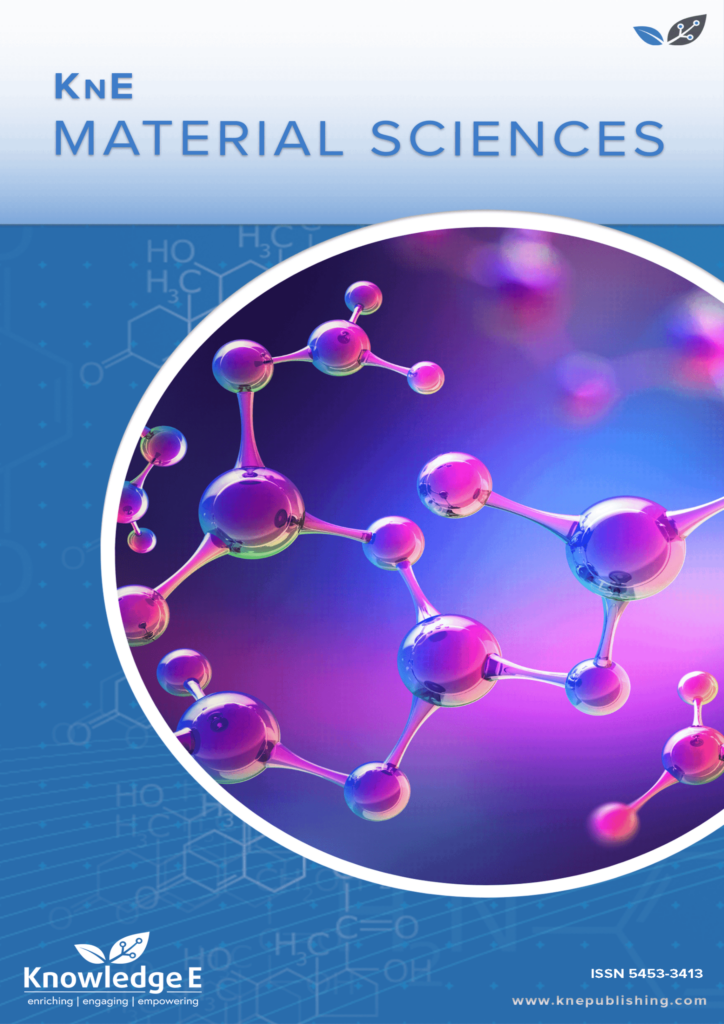
KnE Materials Science
ISSN: 2519-1438
The latest conference proceedings on physical materials, energy materials, electrical materials.
Dynamic Penetration Profile of Starch Betainate, Pluronics and PCC Coated Papers
Published date: Aug 10 2022
Journal Title: KnE Materials Science
Issue title: 1st International FibEnTech Congress (FibEnTech21) – New Opportunities for Fibrous Materials in the Ecological Transition
Pages: 244–250
Authors:
Abstract:
Despite changes in optical and printing properties, the applied coating components on the paper surface have a significant impact on the surface chemistry of office paper. Depending on the use, such as ink penetration for printing and writing papers, an optimal hydrophobic and hydrophilic balance may be beneficial. In this study, several coating components including starch betainate, Pluronics, and precipitated calcium carbonate were employed to coat base paper (paper without any surface treatment). The influence of these components on water penetration was investigated using dynamic penetration. When compared to native starch coated papers, paper coated with starch betainate (a cationic starch ester) showed reduction in hydrophobicity and increased water penetration. Moreover, this effect was further enhanced with the use of Pluronics. Likewise, hydrophobicity decreased as the concentration of starch betainate, precipitated calcium carbonate and Pluronics increased. Furthermore, water penetrated even more quickly when the combination of these components compared with the individual component coatings.
Keywords: hydrophobicity, PCC, Pluronics, starch betainate, water penetration
References:
[1] Sharma M, Aguado R, Murtinho D, Valente AJM, De Sousa APM, Ferreira PJT. A review on cationic starch and nanocellulose as paper coating components, International Journal of Biological Macromolecules 2020;162:578–598. https://doi.org/10.1016/j.ijbiomac.2020.06.131
[2] Lee HL, Shin JY, Koh C-H, Ryu H, Lee D-J, Sohn C. Surface sizing with cationic starch: Its effect on paper quality and the papermaking process. Tappi Journal 2002;1:34– 40.
[3] Lamminmäki TT, Kettle JP, Gane PAC. Absorption and adsorption of dye-based inkjet inks by coating layer components and the implications for print quality. Colloids Surfaces A: Physicochemical. Engineering Aspects 2011;380:79–88.
[4] Gigac J, Stankovská M, Opálená E, Pažitný A. The effect of pigments and binders on inkjet print quality. Wood Research 2016;61:215–226.
[5] Sharma M, Aguado R, Murtinho D, Valente AJM, Ferreira PJT. Novel approach on the synthesis of starch betainate by transestrification, International Journal of Biological Macromolecules 2021;182:1681–1689. https://doi.org/10.1016/j.ijbiomac.2021.05.175
[6] Sharma M, Aguado R, Murtinho D, Valente AJM, Ferreira PJT. Synergetic effect of cationic starch (ether/ester) and Pluronics for improving inkjet printing quality of office papers. Cellulose. 2021;28:10609–10624. https://doi.org/10.1007/s10570-021-04206- w
[7] Liu X, Wu D, Turgman-Cohen S, Genzer J, Theyson TW, Rojas OJ. Adsorption of a nonionic symmetric triblock copolymer on surfaces with different hydrophobicity. Langmuir 2010; 26(12):9565-74. https://doi.org/10.1021/la100156a
[8] Petkova-Olsson Y, Ullsten H, Järnström L. Thermosensitive silica-Pluronic-starch model coating dispersion-part I: The effect of Pluronic block copolymer adsorption on the colloidal stability and rheology. Colloids Surfaces A: Physicochemical Engineering Aspects 2016;506:245–253. https://doi.org/10.1016/j.colsurfa.2016.06.032
[9] Petkova-Olsson Y, Altun S, Ullsten H, Järnström L. Temperature effect on the complex formation between Pluronic F127 and starch. Carbohydrate Polymer 2017;166:264– 270.